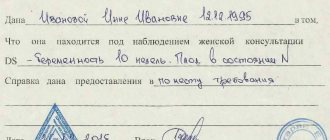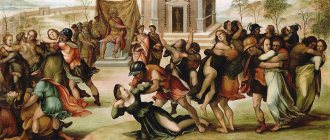The Ingush pay the closest attention to creating a family and arranging a family home. From childhood, they perceive the unspoken laws that permeate the way of life of this patriarchal people. Respect for elders, veneration of age-old traditions and loyalty to one’s family are far from empty words for the Ingush. Keeping pace with the times, they carefully keep priceless treasures of cultural heritage in their hearts and souls. An Ingush wedding, with all its unique rites and rituals, fully reflects the essence of the emergence of a new family. A long period of preparation allows young people to painlessly integrate into the life of the community in a renewed capacity as adults, responsible people.
Ancient culture of Ingushetia
In Ingushetia, from ancient times to this day, a marriage union symbolizes not only and not so much the unity of two young people, but the union of clans. That is why the choice of a future spouse was carried out by the older generation - too many nuances had to be taken into account. In no case were marriages performed between persons bearing the same surname. Numerous family ties, twinning and adoption were taken into account. Also, economically and socially unequal marriages were not accepted, when one of the partners occupied a higher position in society. Customs of tribal feuds, clan alliances and mutual agreements were also taken into account.
Most of the marriages in the old days were carried out by early arrangement. If a young horseman or girl had not been matched in infancy, they could get acquainted on their own, after which they could present the chosen one to the court of the head of the clan. Or older relatives looked for a suitable match for young people. This custom is still preserved in Ingushetia. It is impossible to imagine young people who would go down the aisle against the will of their parents and numerous relatives. Also, divorces were not accepted and are still condemned to this day. If this happened, the shame fell not only on the spouses, but also on their family.
Acquaintance and conspiracy
A wedding in Ingushetia was, perhaps, the only way available to free aul youth to meet people of the opposite sex and find the desired match. At any other time, communication between single guys and unmarried girls was strictly limited. In preparation for the iconic event, the girls sewed and embroidered their own outfits and patterned scarves. And the guys tried to prepare witty sayings and an entertainment program so that they would have something to surprise their possible interlocutor. And at the matchmaking ceremony, a well-spoken tongue was also welcomed.
Realizing his feelings for the chosen girl, the young man immediately notified his parents or older relatives, because at any moment she could be matched to another family. The girl's candidacy was carefully considered. In addition to socio-economic and clan nuances, her character, behavior, reputation, appearance, health and hard work were discussed. Only when the family council gave the go-ahead could the guy begin courtship.
A simple exchange of gifts helped to ensure the favor of the chosen one. The guy conveyed it through a child or a woman, in no case personally! – small gifts: sweets, baked goods, coins. By this he expressed his feelings and hope for reciprocity. If the girl agreed, she would hand over a pair of beautifully embroidered handkerchiefs for her chosen one and his best friend. After this, matchmakers could be sent.
Matchmaking (Zoachalol) in Ingushetia
The matchmaking ritual in Ingushetia was usually performed in winter or spring. It took place in several stages. First, a representative who could speak beautifully was chosen at the family council. He went to the house of his chosen one and declared the heartfelt interest of one worthy young man. The talents and skills of the young man, his well-being and deeds were described in detail and colorfully.
The girl's parents were given a period of half a month to check the information received, evaluate the groom and his family from all sides and make a decision. The venerable representative returned to them for an answer after the allotted time. If they agreed, the day of the actual matchmaking was set.
After receiving consent from the head of the chosen one’s family, the guy’s relatives gathered for a clan council. The most respected, wise and experienced people, spiritual mentors came. One of the uncles and the person who represented the groom had to be present. The venerable assembly was provided with all the information about the girl and her relatives. If there were no obstacles to the rapprochement of the two clans, matchmakers were appointed at the same general gathering.
At the girl’s house, all close and distant relatives were waiting for the representative delegation on the appointed day. Ritual praises were heard, emphasizing the dignity of the young groom and the beauty and good character of the young bride. After exchanging long-winded welcoming speeches, the venerable assembly was sure to inquire about the girl’s opinion. She, like an obedient daughter, willingly obeyed the will of the elders of the clan and her parents.
Urdu or payment for milk, a kind of gratitude for providing and raising a daughter, was also passed on at the final stage of matchmaking. The custom did not stipulate a fixed amount; there was only a minimum level, below which it was simply indecent to give. For example, today the minimum bride price is fifty thousand rubles. But a happy lover could be generous as much as the family's fortunes allowed. After this, the girl was considered an agreement and completely came under the protection of the groom’s family; she was called “our man.”
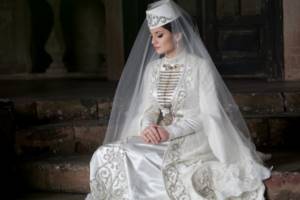
Preparation period
In Ingushetia, complete isolation of young people from each other was practiced. They shouldn't have met even by chance on the street. Usually, if the young people were from the same village, the problem was solved by temporarily moving the guy to distant relatives from another village.
The girl completely excluded communication with young people and men - after all, the bride’s reputation must be impeccable. Also, a ban was imposed on meetings with relatives of the groom of any gender, except for unmarried girls.
The only exception is minor children, with whom customs did not prohibit spending time. If necessary, it was the children who became the link between the bride and the groom or his relatives.
Both sides began an intensive exchange of gifts, preparing food for the feast and holiday gifts for relatives and newlyweds. About two weeks before the wedding date, the bride was transported to relatives or friends on the groom's side, where she awaited the start of the wedding celebrations.
Bride's dowry
Traditionally, a girl's dowry began to be collected from a very young age. She had to do a lot with her own hands: sewing, dresses, embroidery. Some things were bought or made by craftsmen of the family. The time allotted for preparing for the wedding was enough to finally decide on the dowry list, add to it, or check again whether everything was enough. Usually the bride's dowry consisted of household utensils, bedding, rich carpets and the girl's personal belongings.
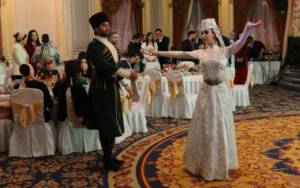
The wedding ceremony itself
As a rule, wedding festivities last up to 10 days. Since after the wedding itself, some more mandatory rituals are carried out.
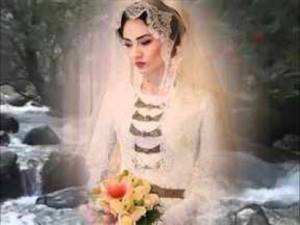
So long | wedding procession|
moves out of the groom's house. This ceremony is led by the groom's uncle or older brother. At the bride's house, guests are greeted with cheerful dancing. Upon arrival at the chosen one’s house, the first to get out of the car are the guy and girl previously identified by the groom. The girl approaches the bride and attaches a needle to the hem of the dress, and also gives a scarf. The guy brings the bride to the car and holds her by the elbow.
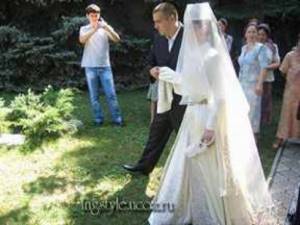
The groom assigns this role to his closest friend or brother. At this time, all the arriving guests and the bride’s family are scattered with the most sincere wishes for happiness and health to the parents and the newlyweds.
When leaving her parents' house, a girl should not turn around so that there are no divorces.
The arrival of the bride at the groom's house is, in fact, the beginning of the wedding.
A relative from the groom’s side lays a rug under the feet of the arriving bride and places a broom. The girl must pick it up and put it aside. The other sister should shower the bride with candies and coins, with this she received wishes for a comfortable life and wealth. The young woman picks up the baby, definitely a boy, and gives him money, so they want her to become the mother of a son, in Ingushetia this is very important for any girl.
The groom's mother presents the future daughter-in-law with a spoon of honey. You cannot refuse, this is a symbol of a happy “sweet” life in a new home with new relatives. Afterwards, the young bride is placed in a corner. She stands there until everyone congratulates her and gives her gifts.
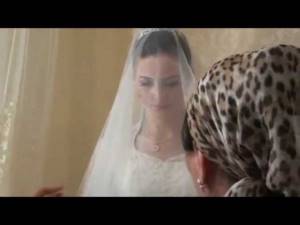
At weddings in Ingushetia there are no witnesses and entertainment, like Russians. The guests are having fun and dancing and this is enough for the young people. Caucasian weddings feature a lot of dancing with all sorts of tricks. The groom goes to celebrate for three days at the house of the people who helped him prepare for the wedding.
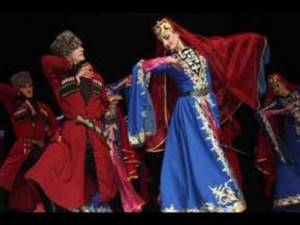
In the old days, women and men sat in separate rooms during the celebration, and so did the young and old. Some families have kept this tradition.
All close friends of the groom and his family come to his parents' house. They are treated to the best food and drinks. Guests give parents money in envelopes and many gifts.
The bride's side gives expensive gifts to the groom's close relatives. This must include jewelry (usually with diamonds) and expensive clothing.
Wedding dresses are usually chosen to be national; they look very elegant and stylish. Classic clothes, wedding dress and groom's suit are also acceptable. This is decided by the newlyweds and their parents.
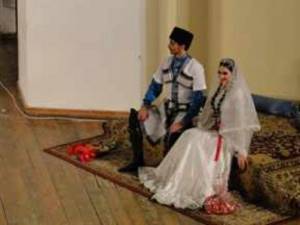
Wedding celebrations in Ingushetia
Wedding celebrations were scheduled for the fall, after field work had ended and the new wine had ripened. The time was chosen by the young man's relatives, taking into account the readiness of the bride's family for long celebrations. Both parties prepared separately for the wedding. For the bride's parents, the feast lasted one day, since the bride immediately went to the betrothed's house. But for my husband’s relatives, the festivities dragged on for three days.
The hospitable Ingush organized a holiday for everyone. Not only friends and all relatives up to the twelfth generation were walking, but also neighbors and random guests. Everyone was happy these days. When the wedding train departed for the bride, the young man's sisters remained in the house, preparing the tables for the celebration.
At home, the girl was dressed in a wedding dress, and she was waiting for the groom's representatives. The friends pinned a steel needle with a white thread to the hem of the robe for protection from the evil eye and for good luck, and put a silver coin in a piece of white velvet or silk in the bodice of the dress - for wealth and housekeeping. The young wife kept these talismans throughout her life.
As the bride was led out of the private room to the guests, she greeted the distinguished assembly. This was followed by a marriage ritual conducted by a mullah. At the same time, the groom was absent, he was replaced by an older relative. From that moment on, the girl became a full-fledged wife. However, during all the holidays she never saw her husband. The first time the newlyweds met was when the girl went out to get water the morning after the wedding.
Arriving at the groom's house, the girl stood in a decorated corner and there received gifts and congratulations from guests and relatives. Usually they gave jewelry and gold, dishes, money and fine fabrics. Friends, relatives, and just acquaintances came. Guests were treated to the best and most delicious national dishes. Young and aged wine, pastries and sweets were always served. The wedding was celebrated with obligatory songs, dances, fun and noisy.
Dear old man
What does the “wedding economy” consist of? How much do toilets from Ingush couturiers cost? The RG correspondent looked for the answer to these questions among white taffeta and lace.
In Ingushetia, this business is based primarily on the local mentality. The attitude towards weddings here is almost cult-like: without it, a rare couple will decide to enter into a marriage. Since everyone comes to the celebration (the Ingush do not practice official invitations to such an event), each family, first of all, gives its all financially to the fullest extent.
The list of the most expensive wedding attributes includes the bride's outfit. National wedding costumes are popular among Ingush girls - a dress, a hat to go with it, a small teardrop-shaped fabric bag, a metal bib and belt, which can be either ancient or modern. “Antique” costs the bride’s relatives several times more.
The cost of a wedding dress in Ingushetia is sometimes comparable to the price of a toilet from world couturiers. For example, in a well-known salon in Nazran it can cost 350 thousand rubles. The price depends on the amount of manual work. Embroidery and beading - the most expensive elements of an outfit - increase its cost by three or even four times. Fabrics also play an important role. Some wedding salons in the republic prefer to work with material from such well-known brands as Giorgio Armani, so the dress turns out more beautiful and brings more profit.
From year to year, the demand for the national bride’s dress in Ingushetia is growing. But each wedding salon has its own style and price range. However, as a rule, there are no fixed prices for services. The issue of price is often decided individually with each client.
Well-promoted salons, which have been operating on the market for many years, also “take” for their own fame in the republic. Meanwhile, their high prices do not deter customers. They occupy their own segment in the republican wedding industry market and, as a rule, stand firmly on their feet.
In Zina Inarkieva’s wedding salon, opened about ten years ago, until recently only three seamstresses worked, but today there are eight employees in the team. The company is a family-run company, mainly employing relatives of the owner of the salon.
Despite the age of computer technology, the company still has paper accounting in the old fashioned way. Zina writes down in a notebook how much goods were purchased and what the funds were spent on. The seamstress's salary is ten thousand rubles a month plus bonuses depending on the amount of work performed. The maximum is 20 thousand. Seamstresses have the right to use the company’s equipment for their own needs one day a week.
The entrepreneur spends another 35 thousand rubles a month on renting premises: she does not yet have the opportunity to purchase or build her own building.
Zina purchases imported fabrics and accessories in Moscow and Pyatigorsk. So far, her salon needs five rolls of forty meters of white fabric and fifteen rolls of beige fabric per year. She mainly orders embroidery of national ornaments through friends who travel to China. In a Chinese factory, at least a thousand meters of fabric embroidered with gold or silver thread are made from an Ingush design. The finished “ribbon” of the ornament costs the entrepreneur about 100 thousand rubles, and it lasts a long time.
The salon is not idle without work. One dress takes about a week to sew, depending on its complexity. If the fittings are glued to the fabric, the work takes less time. It takes several weeks to decorate the bride's costume with beads and hand embroidery. The owner of the salon personally designs dress models and cuts them.
When there is no order for a wedding dress, seamstresses make dolls dressed in national clothes, which are sold very expensively - from fifteen thousand rubles per toy.
The salon lives not only by selling custom wedding toilets. Part of his profit comes from the rental of bridesmaid dresses and accessories. The simplest and already used wedding dress will cost 25 thousand rubles, a more sophisticated and new one will cost from 40 to 70.
According to Inarkieva, any business must grow; one cannot stop there and give in to slack. Therefore, Zina plans to hire an artist-designer who will take on part of the work. She also has a more global goal - to open her own wedding store and... a museum.
“We have accumulated a lot of dresses that could very well become museum pieces.” They were sewn according to ancient patterns; Ingush women wore such outfits in ancient times,” says the craftswoman.
Moreover, in a wedding salon in Nazran you can see not only national dresses, but also a dress made of an exotic material - salmon skin, which can easily be mistaken for snake scales. Zina Inarkieva purchased it for forty thousand rubles from the wife of the Ingush developer of fish skin processing technology, Akhmed Shadiev. Galina Shadieva sewed an outfit for a show of models from designers from Ingushetia abroad. The dress was demonstrated at the international festival “Woman of the Planet”, held last year in Malta, where the national Caucasian costume was presented for the first time.
Models of Zina Inarkieva participated in several fashion shows in Moscow and other major cities of the country. Despite the fact that participation in such events is not cheap, the owner of the wedding salon covers these expenses.
The result of her trips to fashion festivals was that the owner of the wedding salon met interesting Russian designers and jewelers who promised to help her develop new versions of metal bibs and belts for the bride’s costume. And with the famous fashion designer from Dagestan Shamkhan Alikhanov, who creates clothes for men, Zina Inarkieva agreed on a joint fashion show.
Interesting customs of the Ingush wedding
Like all peoples, the Ingush have plenty of signs and original traditions associated with weddings.
- Since the end of the 19th century, a girl who agreed to marriage gave her chosen one, in addition to scarves, cigarettes.
- The day before the wedding, the girl’s father received gifts from new relatives, and refusal was not accepted.
- Celebrations were held separately for men and women. Also, young people were placed in some houses, and venerable elders were gathered in others to make the guests feel comfortable.
- The bride was waiting for the groom in a secret shelter, from where only a close relative or brother of the groom could pick her up.
- To make family life sweet and without conflicts, the mother-in-law brought a spoonful of honey to the young woman who crossed the threshold of the new house.
- Also, upon entering her husband’s house, the bride had to take a male child in her arms so that the marriage would be blessed with numerous offspring, and the first-born would be a boy, the heir. She gave the baby several coins.
- While the wedding was celebrated at the house of the groom's parents, the young husband, for three days after the wedding ceremony, stayed with the family of his closest friends, who were responsible for him and helped him during the preparatory period.
At the end of the three-day wedding feast, the young wife could finally leave the house for the first time, accompanied by her friends and her husband’s young sisters. She went to a stream, spring or river for clean spring water. It was at this moment that the chosen one met her, and they walked together to their home or to that part of the community house that was allocated to their family.
After this it was time for family visits. The young married couple visited the homes of numerous relatives, friends and neighbors, as if getting to know each other again. Only a year later or after the birth of their first child could the wife visit her parents for the first time; before that she was protected like a treasure. After all, this is an expectant mother, and her physical and spiritual health was most important.
In her father's house, the young woman received rich gifts from her relatives: large and small livestock, money, jewelry.
Interesting customs
Ingush wedding traditions are distinguished by their originality. Here are some of them:
- Since the beginning of the 20th century, a young girl giving her consent to marriage gave her future husband, in addition to scarves, also cigarettes;
- Wedding celebrations were held separately for men and women, taking into account their age. Young people were assigned to some houses, older guests were gathered in others;
- For a sweet and calm life for the young, the mother-in-law presented her son's future wife with a spoonful of honey when the young woman entered the threshold of the new house;
- Upon entering the house, the young bride was supposed to take the male child in her arms and treat him with sweets and give him a few coins. This was necessary so that the family would be gifted with numerous offspring, and the firstborn would be a boy and an heir;
- During the entire wedding, the young husband after the wedding was in a circle of close friends who shared his joy and bore with him the responsibility of the moment.
After the end of the celebration, the young wife, accompanied by her husband’s friends or sisters, left the house and headed to the reservoir for clean water. Her husband met her there, and they returned to their home together.
A year after the wedding or after the birth of the first child, the young wife could visit her father’s house. Before this, she had to take care of herself and her health for the birth of her first child. The woman received rich gifts from her parents. Usually these were cattle, money or jewelry.
Modern wedding customs in Ingushetia
Many traditions have become a thing of the past or have degenerated into stylized performances. The abduction of a bride without her consent has become an unimaginable rarity, as well as conspiracies in early childhood or forced marriages of young people who do not know each other. But, as before, there is a strict taboo on marrying namesakes. Also, modern girls and boys can see each other after an agreement, but not live together. Celebrations in cities are held in banquet halls of restaurants or outdoors. In villages, guests usually gather in one of the courtyards. The strict division into female and male halves is no longer observed, as well as the three-day ban on meeting after the wedding for spouses. And, of course, a young wife can meet with her parents at her own discretion.
A modern Ingush wedding is full of enthusiasm and fun, sparkling humor and the best wishes for the newlyweds. The Ingush people do not need a special entertainment program, because every guest here is his own toastmaster, an excellent dancer and a wonderful singer.
After the wedding
A few days later, the young wife collects clean water, always accompanied by young girls and children. And after that, the young family goes to visit the houses of all relatives on both sides.
There is also a tradition of the groom not seeing the bride’s parents at all.
A girl could come to her parents’ house for the first time after marriage no earlier than a year later, and maybe even after the birth of her first child. She should come to the house with gifts. Not only parents are gifted, but also uncles, aunts, brothers, sisters and their children. She also brings treats, sweets, pies, etc. She is accompanied by women and children from her husband's side. The married daughter spent more than a month in her father's house. Parents give reciprocal gifts to both their daughter and her new relatives. Usually the gift had to be substantial, such as a cow or buffalo. The bride's uncle could also give this gift.
The rituals performed by the Ingush at weddings have a religious basis. The content of all customs and rituals hides the wish for the young to have a long, happy, rich life together. Respect for elders, modesty and humility - these are the virtues of a real Ingush girl.






